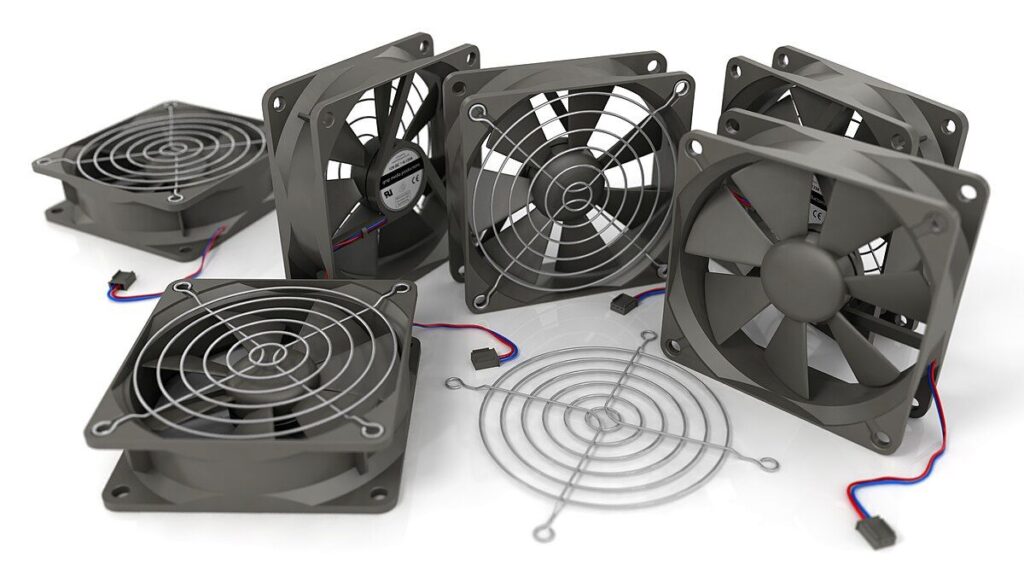Efficient cooling is critical to the performance and lifespan of electronic devices. It ensures components operate within safe temperature ranges and prevents overheating, which can cause damage or decrease efficiency. When it comes to cooling electronics, selecting the right solution can be tricky. Blowers and fans are two of the most common tools for this purpose, but each has unique characteristics that make it suitable for different applications.
This comprehensive guide will break down the differences between blowers and fans, help you understand their use cases, and clarify which is optimal for cooling electronics, including when to consider brushless DC blowers.
What Are Blowers and Fans?
Blowers
Blowers are devices designed to create a focused, high-pressure airflow. They direct air through a localized area, making them ideal for applications that require targeted cooling.
Key characteristics of blowers include:
- High Pressure, Low Volume: They generate a more concentrated airflow, perfect for confined spaces.
- Directional Airflow: Blowers operate by forcing air through a narrow opening, which provides controlled cooling to specific components.
- Common Types: Brushless DC blowers are a popular option due to their efficiency and durability.
Fans
Fans, on the other hand, are designed to circulate larger volumes of air at lower pressure. They are commonly used to cool broader areas rather than focusing airflow on a specific spot.
Key characteristics of fans include:
- High Volume, Low Pressure: Ideal for dissipating heat across larger surfaces or enclosures.
- Open-Air Distribution: Fans move air freely within a space, making them suitable for general cooling purposes.
- Common Applications: Computers, HVAC systems, and industrial equipment often rely on fans for heat management.
Blowers vs. Fans: Key Differences
1. Airflow Direction
- Blowers provide directional airflow and are ideal for targeting specific areas in small, enclosured spaces.
- Fans offer nondirectional airflow, dispersing air more broadly and effectively cooling larger areas.
2. Pressure and Volume
- Blowers deliver high pressure and low airflow volume, making them effective for tight cooling zones.
- Fans distribute large volumes of air at low pressure, which works best for cooling open spaces or large surfaces.
3. Noise Levels
- Blowers generally operate with higher noise levels due to their concentrated airflow characteristics.
- Fans usually run quieter since they distribute air more broadly without as much restriction.
4. Design and Size
- Blowers are compact and suited to specialized, constrained environments.
- Fans come in a variety of sizes but typically require more space to achieve effective airflow.
5. Applications
- Blowers are perfect for cooling specific components such as CPUs, power supplies, or enclosed electronics.
- Fans work well in larger electronic devices and systems where general ventilation is key, like desktops and servers.
When to Use Blowers
Blowers are particularly suited for situations where targeted and efficient cooling is necessary. For example:
- Small, Enclosed Spaces: Blowers are perfect for small electronic enclosures where precise airflow is required.
- High Heat Concentration: Situations where a single component (e.g., a processor) generates significant heat benefit from blower cooling.
- Compact Designs: Their small and sleek design makes them ideal for use in compact or portable electronic devices.
If maximum efficiency is your goal, brushless DC blowers provide enhanced durability, better energy efficiency, and reduced maintenance compared to traditional blowers.
When to Use Fans
Fans are ideal for broader and more general cooling applications, including:
- Large Surface Cooling: Use fans to cool larger heat sources or enclosures.
- Ventilation Systems: They are well-suited for systems requiring consistent air circulation, like desktops, laptops, and industrial PCs.
- Low Noise Requirements: Fans are the better choice for environments where maintaining quiet operation is necessary.
Choosing the Right Solution for Electronics Cooling
Choosing between blowers and fans for your electronics cooling needs depends on several factors. Here’s how to decide:
- Assess Cooling Needs
Consider the size of the area or component you need to cool. A focused, high-pressure solution like a blower is best for confined spaces, while fans work better for overall ventilation.
- Evaluate Environmental Constraints
How much space do you have for the cooling system? Blowers work well in tight spaces, whereas fans require more room to operate effectively.
- Account for Noise Sensitivity
If noise control is important, opt for fans, as blowers tend to operate at higher sound levels.
- Explore Energy Efficiency
Brushless DC blowers are an excellent choice for energy-efficient, long-lasting performance, especially in industrial or compact devices.
- Budget Considerations
Evaluate total cost, including initial investment and long-term maintenance. Blowers often offer higher durability but may have a higher upfront cost compared to fans.
Achieving Optimal Cooling
Ultimately, the decision between blowers and fans hinges on your specific application needs. Blowers excel in high-pressure, targeted cooling scenarios, while fans provide broader and quieter air circulation. For electronics cooling in compact setups, brushless DC blowers offer efficient and durable performance, making them a top choice for professional applications.
When you pair the right cooling solution with your electronics, you’re not just extending the performance and lifespan of your devices—you’re improving overall efficiency and reliability.






